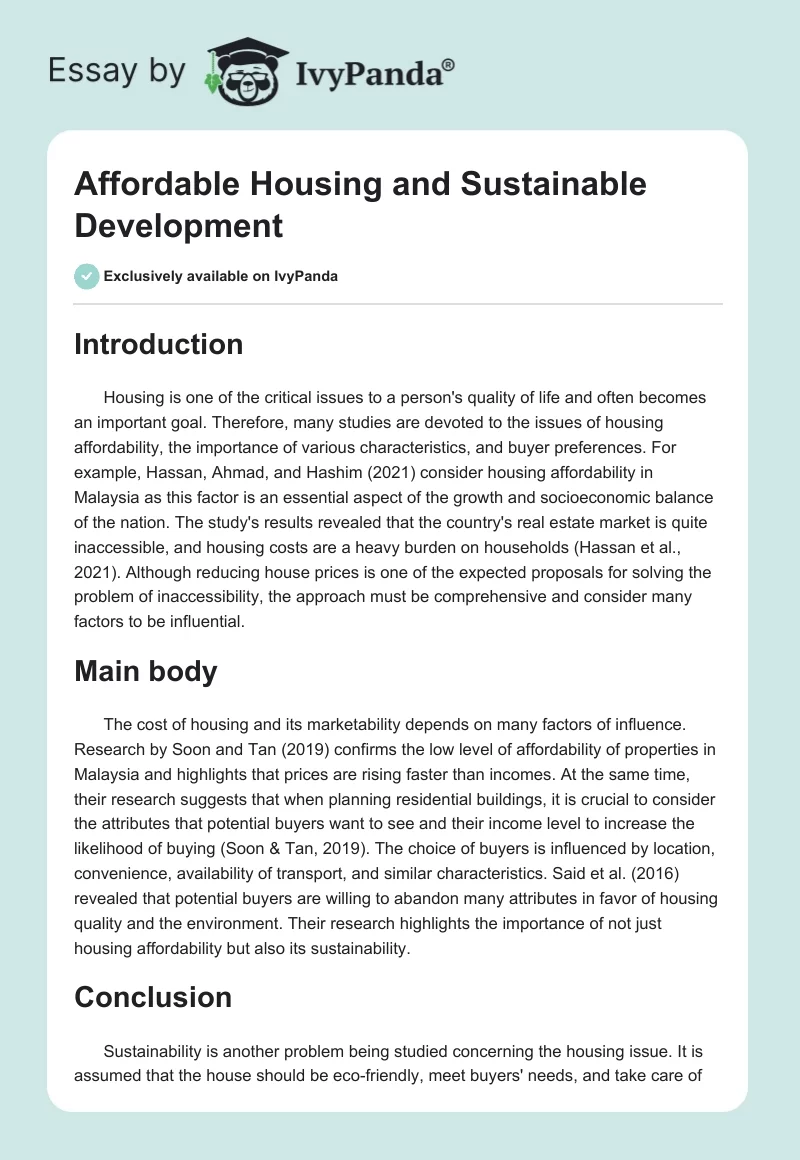Introduction
Housing is one of the critical issues to a person’s quality of life and often becomes an important goal. Therefore, many studies are devoted to the issues of housing affordability, the importance of various characteristics, and buyer preferences. For example, Hassan, Ahmad, and Hashim (2021) consider housing affordability in Malaysia as this factor is an essential aspect of the growth and socioeconomic balance of the nation. The study’s results revealed that the country’s real estate market is quite inaccessible, and housing costs are a heavy burden on households (Hassan et al., 2021). Although reducing house prices is one of the expected proposals for solving the problem of inaccessibility, the approach must be comprehensive and consider many factors to be influential.
Main body
The cost of housing and its marketability depends on many factors of influence. Research by Soon and Tan (2019) confirms the low level of affordability of properties in Malaysia and highlights that prices are rising faster than incomes. At the same time, their research suggests that when planning residential buildings, it is crucial to consider the attributes that potential buyers want to see and their income level to increase the likelihood of buying (Soon & Tan, 2019). The choice of buyers is influenced by location, convenience, availability of transport, and similar characteristics. Said et al. (2016) revealed that potential buyers are willing to abandon many attributes in favor of housing quality and the environment. Their research highlights the importance of not just housing affordability but also its sustainability.
Conclusion
Sustainability is another problem being studied concerning the housing issue. It is assumed that the house should be eco-friendly, meet buyers’ needs, and take care of future generations to be sustainable (Karuppannan & Sivam, 2009). However, sustainability often conflicts with affordability, as it can be quite expensive to provide. Research suggests different options for combining these essential characteristics, for example, through design, social sustainability, location, and other features (Karuppannan & Sivam, 2009). Thus, buying a home is quite expensive, and a few families can afford it. An integrated approach, considering policy, building issues, and other aspects, is vital to ensure the affordability and attractiveness of housing.
References
Hassan, M. M., Ahmad, N., & Hashim, A. H. (2021). A review on housing affordability in Malaysia: Are we doing fine? Malaysian Journal of Consumer and Family Economics, 26, 181-206. Web.
Karuppannan, S., & Sivam, A. (2009). Sustainable development and housing affordability. Burns, 1-9. Web.
Said, R., Majid, R. A., Alias, A., Adnan, Y. M., & Razali, M. N. (2016). Sustainable housing affordability in Sabah. Planning Malaysia, 5, 65-76.
Soon, A., & Tan, C. (2019). An analysis of housing affordability in Malaysian housing markets and the home buyers’ preference. International Journal of Housing Markets and Analysis, 13(3), 375-392.


